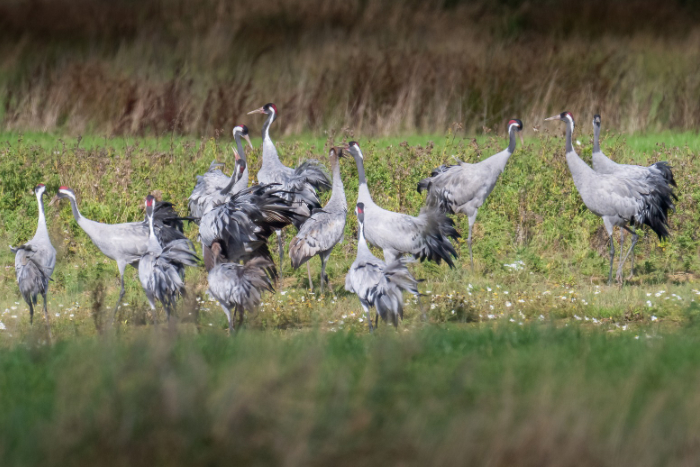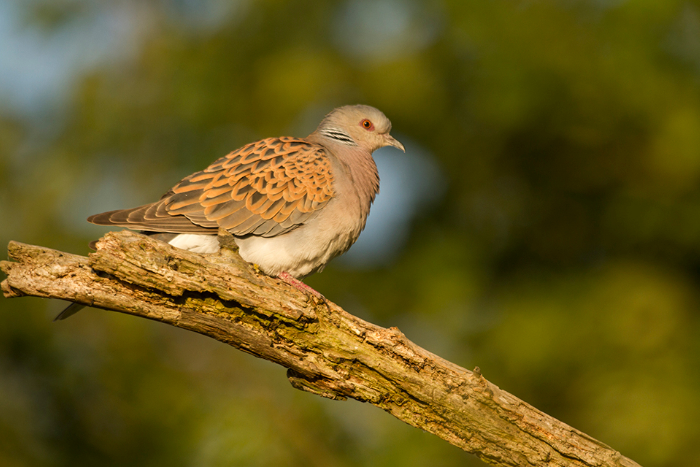
Creating space for nature
By Rachel Shaw
Lincolnshire Wildlife Trust
The two birds soared high into the sky until became tiny specks. If I hadn’t seen them closer to the ground, I wouldn’t have known that they were the tallest bird in the UK with a wingspan as big as a door.
The two cranes were flying high above Willow Tree Fen nature reserve. I wondered what their view was like from so high up.
They would be looking down on a patchwork of large square-edged fields. Neat and precise. Straight lines with no meanders. Each field uniform in colour whether ploughed or with a crop growing. But in the middle of all the order, there’s Willow Tree Fen.
Curvy lines and a multitude of greens, yellows, oranges, browns and blues. Water, like splashes of paint, where it chooses to be rather than hemmed in. A natural, ever-changing kaleidoscope. Think Jackson Pollack rather than Mondrian.
When the Lincolnshire Wildlife Trust bought Willow Tree Fen in 2009, it looked like the surrounding landscape with straight lines and a monoculture of colours. The transformation has been dramatic and beneficial for a whole range for wildlife from the easy to see cranes and marsh harriers, to otters and bitterns.
As the populations of these and other species expand, they need more places like this.
The cranes at Willow Tree Fen have gone from one pair that nested in 2020 to three pairs last year. Instead of leaving in the winter, they stay all year to defend their territory against an influx of cranes looking for somewhere to nest.
On one day last November there were more that 30 cranes at Willow Tree Fen. Some will be new young pairs, they need to find their own place to nest. Where will they find a higgledy-piggledy, kaleidoscopic landscape for themselves?
If the cranes were to fly north, heading towards Lincoln, amongst the straight-sided fields and hemmed in waterways, there are pockets of wilder landscapes. But what does exist is small and perhaps not providing exactly the right habitat, at the right scale.
However, if the cranes drifted north-west, they’ll fly over Boothby Wildlands. It’s still in the early stages but over 1,500 acres is being allowed to return to nature. Trees are already starting to break free from the hard-edged copses and hedgerows and set seed where they choose.
From here, if the cranes flew northward and passed to the west of Lincoln, they’d fly over Wilder Doddington where there’s a 100-year plan to bring back more nature to the estate.
Carrying on north and a little to the east, the cranes would reach Wild Wrendale. Smaller than the others, but already five years into the journey, Wild Wrendale is proving how quickly nature can return when given a chance. At the Lincolnshire Wildlife Trust, we’ve witnessed this on land we’ve bought and restored over the last 30 years and it’s about so much more than cranes.
Under the ground, the soil is recovering and storing more carbon. It’s able to soak up rain rather than the water rushing off and causing flash flooding. And think about all the small insects that thrive in these wilder landscapes.
They may look insignificant to us but they feed swallows, house martins and bats. And the plants considered by many as weeds, their seeds could feed turtle doves. Whatever the scale, perhaps we can all allow a little more wildness into our lives.
By accepting naturally bendy lines, a splodge of water, and plants where they choose to grow, just think what we can achieve.
Pictured above are Cranes at Willow Tree Fen by David Roberts and below is a Turtle Dove by Russell Savory.

